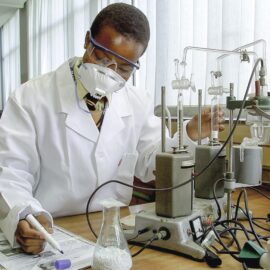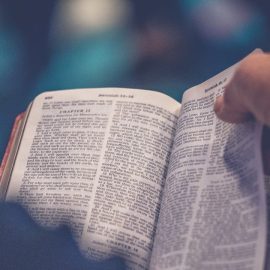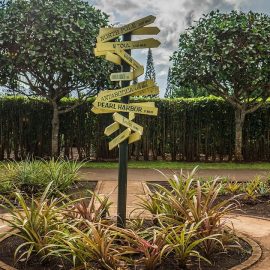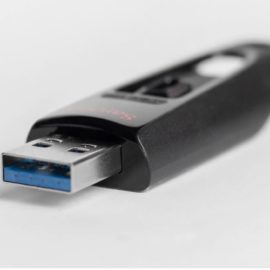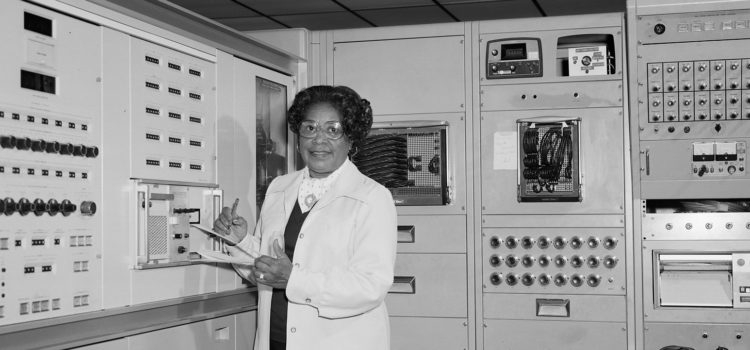
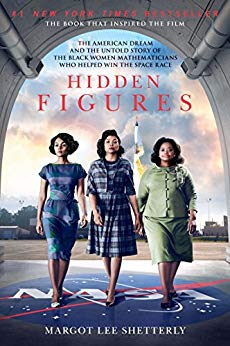
This article is an excerpt from the Shortform summary of "Hidden Figures" by Margot Lee Shetterly. Shortform has the world's best summaries of books you should be reading.
Like this article? Sign up for a free trial here .
Who is Mary Jackson in Hidden Figures, and what were her contributions to NASA?
Mary Jackson was an American aerospace engineer who worked for NACA (before it became NASA) in 1951. Native to the Hampton Roads area, where Langley Research Center was located, Jackson broke barriers by becoming NASA’s first black female engineer.
But what did Mary Jackson do at NASA? For Mary Jackson, NASA was a dream job and a challenge. Learn more about Mary Jackson’s contributions and career.
Mary Jackson, Hidden Figures Main Character and NASA Engineer
In 1951, a new 26-year-old hire named Mary Jackson made her way to West Computing. Whereas so many of her predecessors had been “come-heres,” transplants from other parts of the country, Mary was a “been-here:” she’d grown up in Hampton Roads and had deep roots in that part of Virginia. She graduated from high school in 1938, after which she had enrolled at Hampton Institute, an all-black college founded on the idea of self-help and practical and industrial training.
With these founding principles, most women at Hampton studied home economics, but Mary was different. She completed a double major in mathematics and physical science. After graduating, she married and started a family. Mary also became deeply involved in her local Girl Scout troop, where she committed herself to helping young African-American women make the most of themselves—with a special focus on helping them prepare for college careers.
Mary was working as a clerk typist at Fort Monroe in 1951. Her mathematical abilities quickly became obvious to her superiors, and with the Korean War heating up, there was an urgent need for more skilled computers at NACA. After just three months at Fort Monroe, the federal government transferred Mary to Langley, where she began working for Dorothy Vaughan. Mary Jackson, NASA employee, became a reality.
Mary Jackson’s Contributions: Supersonic Pressure Tunnel
But what did Mary Jackson do at NASA? Mary Jackson, NASA mathematician, was a full-fledged Civil Service employee. But the sting of discrimination that she’d known so well growing up in Virginia still followed her to Langley. Once, when she was sent by Dorothy Vaughan on an assignment to the predominantly white East Side, she asked the white computers where she could find the bathroom. The white girls simply laughed at her—Mary was black, so how could they possibly know where her bathroom was? The ugly specter of Jim Crow hurt all the more because it was at Langley, where Mary was supposed to be an equal, working with her colleagues to help her country. But still, absurdly, she was unable to perform her bodily functions in the same bathroom as her white colleagues.
As she was reeling from that encounter, Mary Jackson’s NASA prospects improved, however, when she ran into Kazimierz “Kaz” Czarnecki, a white engineer who was an assistant section head working on Langley’s Supersonic Pressure Tunnel (SPT). Although he was a total stranger to her, Mary shared her frustration about the bathroom incident with Kaz. He listened to her story, sympathized, and asked Mary to come work for him instead of returning to West Computing. She didn’t know it, but this chance encounter would change her entire career.
Mary quickly distinguished herself while working on the SPT unit. One day, she was asked to perform some calculations on supersonic and hypersonic research for John Becker, a powerful and important division chief at Langley. Mary deftly delivered her calculations to Becker, fully confident that she had performed them correctly. Becker refused to accept them, however, insisting that something was wrong with Mary’s numbers.
But she stood by her work. There was an error in the numbers—but it was Becker’s, not Mary’s. He had given her the wrong numbers to input, but Mary had performed her calculations flawlessly. Becker apologized, and Mary earned a reputation as a trusted and capable mathematician. She was marked as someone who deserved to move ahead.
Breaking Down Barriers
At this time, Mary Jackson’s NASA career improved when she was promoted to the rank of engineer at Langley. This was unusual—most of the women (black and white) working as technical professionals at the laboratory, regardless of their talent, were classified as mathematicians or computers. This meant lower pay and lower status. Mary Jackson’s Hidden Figures role also shows her fighting against inequality.
To Mary, who had always been so deeply committed to social justice, this was unacceptable. She was not content to keep her promotion to herself: she wanted to ensure that others who had been marginalized would have the same access to opportunity that she did. She became a tireless advocate with the National Technical Association, the professional organization for black engineers and scientists.
She also saw Langley as a beacon of opportunity for the Hampton Roads community, and she made every effort to ensure that local children knew about the exciting work being done in their hometown. She organized tours and field trips for students from public schools and from Hampton Institute to let them see engineers at work. It was vitally important that black children be able to see black professionals working in such a cutting-edge, dynamic environment—it raised their expectations and broadened the possibilities they could imagine for themselves.
But she saw that her white female colleagues were also marginalized by the male-dominated power structures at Langley. Mary Jackson’s NASA plan was to create alliance. She forged alliances with white female engineers like Emma Jean Landrum. In 1962, the two women participated in a career panel in front of an all-black group of junior high school girls. A black and a white professional appearing together, speaking as equals, made a profound and powerful impression on these girls. So when people asked who is Mary Jackson, these girls could answer, and have someone to look up to.
Mary Jackson’s Legacy
Their years at Langley would be marked by watershed moments in the fight for civil rights—the Brown v. Board of Education decision, the 1963 March on Washington for Jobs and Freedom, and the passage of the Civil Rights Act and the Voting Rights Act. As pioneers, the West Computers had opened the doors for people of color who would follow in their footsteps. Mary Jackson, NASA engineer, always made a point of welcoming new black employees, helping them find places to live and offering them a home-cooked meal when they were homesick.
She, along with women like Katherine Johnson, created an informal network of older black women who helped new minority employees make the transition to the agency. In doing so, they midwifed the careers of a generation of black engineers and scientists, including Christine Mann (later Christine Darden), who knew Katherine Johnson through a friendship with the latter’s daughter. Mary Jackson being named Federal Women’s Program Manager was the natural fulfillment of a career defined by helping girls and women of all colors advance. So, the question “what did Mary Jackson do at NASA” was complicated. She had her job, but she also shepherded in a new era of opportunity.
When, on July 20, 1969, the men of the Apollo 11 mission walked on the surface of the Moon, it was the fulfillment of many things—President Kennedy’s 1961 challenge, the hopes and dreams of a nation, and decades of research, advocacy, and struggle on the part of NASA’s black scientists and engineers. That night, Katherine Johnson watched the landing on television, transfixed by the marvel of human achievement she was witnessing, and her role in bringing it to fruition.
So, when you ask yourself who is Mary Jackson from now on, the answer should be clear. Mary Jackson’s NASA career was marked by incredible successes and a rise in ranks that was unheard of at that time. Mary Jackson in Hidden Figures helped break through barriers, and made incredible and historical contributions to her country and to science, without which NASA would not have achieved its goals.

———End of Preview———
Like what you just read? Read the rest of the world's best summary of Margot Lee Shetterly's "Hidden Figures" at Shortform .
Here's what you'll find in our full Hidden Figures summary :
- How brave black women were instrumental to the American space race
- How they confronted racism and sexism to forge a better future
- Their enduring legacy in American history

